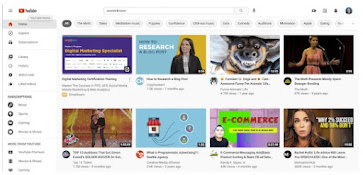What should be included in an SEO audit?

- Review (and Optimize) Meta Descriptions and Meta Titles. ...
- Improve User Experience (UX) ...
- Check for Keyword Cannibalization. ...
- Fix Indexing Issues. ...
- Optimize Content With Keywords. ...
- Check for Duplicate Content. ...
- Check Loading Times. ...
- Analyze Organic Traffic.
An SEO audit is the process of analyzing how well your web presence relates to best practices – it is the first step to creating an implementation plan that will have measurable results.
The purpose of the audit is to identify as many foundational issues affecting organic search performance as possible. The SEO audit will reveal:
- Technical SEO issues
- Website structure issues
- On-page SEO issues
- Potential off-site problems
- User experience issues
- Content gaps and opportunities
- Competitive marketplace insights
What Is an SEO Audit?
An SEO audit is the
process of identifying problems or errors that can prevent your site from
ranking on Google and other search engines. Multiple parts make up an SEO
audit, including:
·
Making sure your site is being correctly crawled, indexed, and
rendered by Google
·
Checking your website for on-page SEO problems
·
Examining your off-page SEO for potential issues on others’ sites
that relate/link back to your site
·
Verifying that your site has a good user experience (for both
mobile and desktop users)
·
Keyword-optimizing your content
·
Combing your website for duplicate or thin content
·
Setting up and maintaining comprehensive reporting to track your
website’s performance

SEO audits are crucial
to help your site and business avoid:
·
Losing out on organic traffic due to site health issues
·
Losing out on sales opportunities or losing the competitive edge
to other brands
·
Having your site improperly indexed (meaning searchers won’t be
able to find it)
·
Facing penalties from Google for toxic backlinks
In short, auditing your site can reveal problems that may be costing you traffic and sales.
SEO audit
part one: On-page SEO
Your on-page SEO
audit consists of site elements you can control and optimize, and a large
portion of that is the content. In
other words, an on-page SEO audit focuses on optimizing elements within your
website that impact your site’s SERP rankings.
Keyword research
What better to get your content ranking than keywords? Before you create content with keywords, you need
to understand what content is currently ranking and what people really mean
when they’re searching for a keyword. Go
through your competitors’ websites that are ranking well on Google and see what
they’re focusing on with their content. Is there anything that they rank for
that you don’t? Make
sure your content is meeting the users’ search intent, as well.
Search for your keyword in Google and see what comes up. What are other
top-ranking sites doing that is making people click? Sometimes, a keyword can start with “what is,”
but the searcher is actually looking for a “how to.” You’ll discover these
subtle but important nuances with some research that will help you rank!

Keyword usage
So, you understand why users are typing a certain keyword. Now you have
to use it in your content if you aren’t already. You
should be using keywords in you’re: headers, body content, title tag, and Meta
description.
I’ll break it down. You
should start by using keywords in your headers where they fit
naturally. So say you
want to tell people why they should use your affordable home improvement
services. You might want to start that section of your website with a bold
header that tells them “why you should use our affordable home improvement
services.” Then, you’ll want
to use “affordable home improvement services” and other similar variations of
this keyword where it makes sense throughout the body of your content. Don’t
stuff your keyword everywhere…
That can actually hurt your SEO. Be sure it makes sense if you read it
out loud. You can use related
keywords in your content to help give search engines the context of your page.
Tools like Keywords FX, LSI graph, or even related searches and Google autosuggest are great for helping you come up with related keywords.























